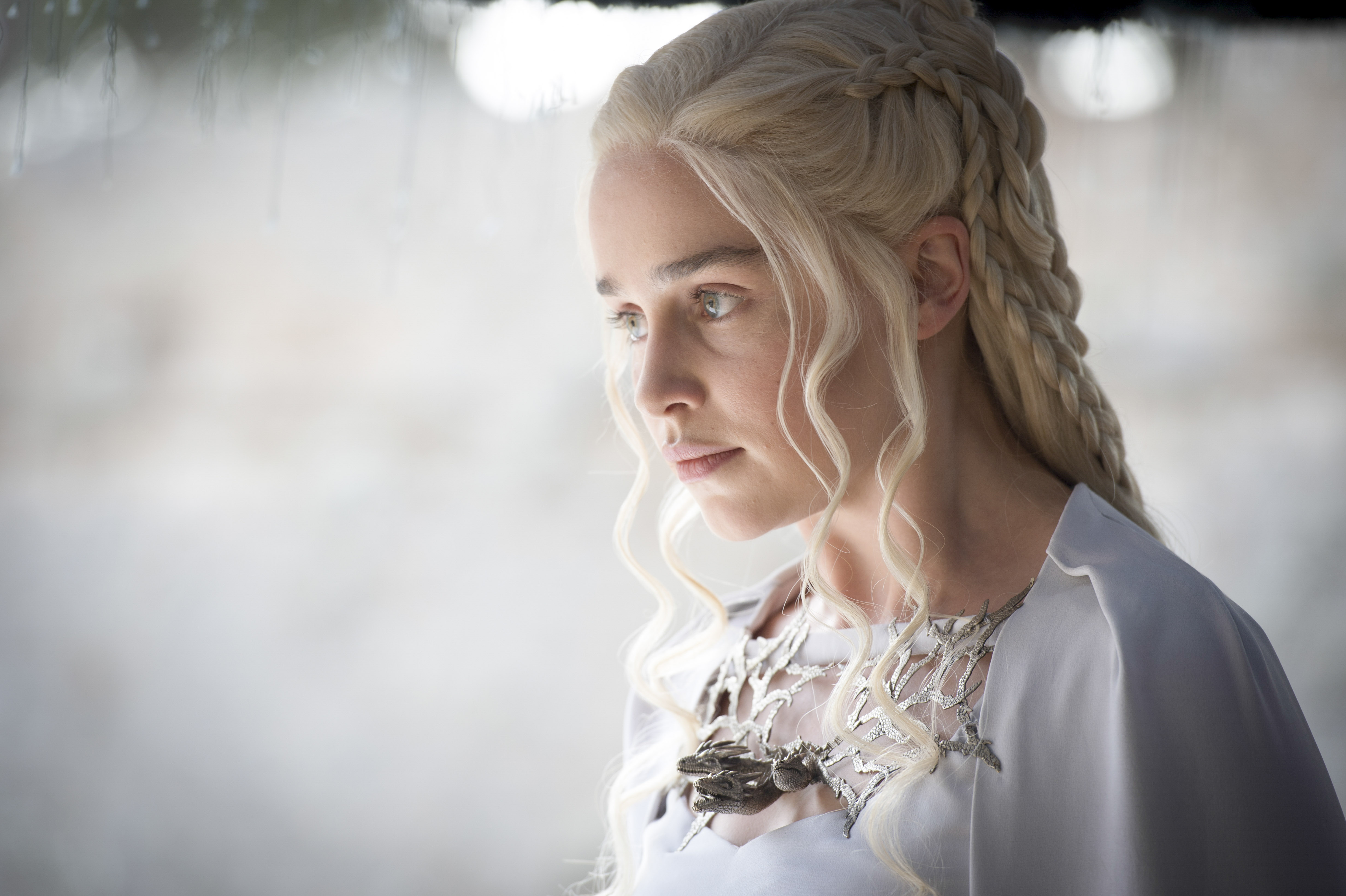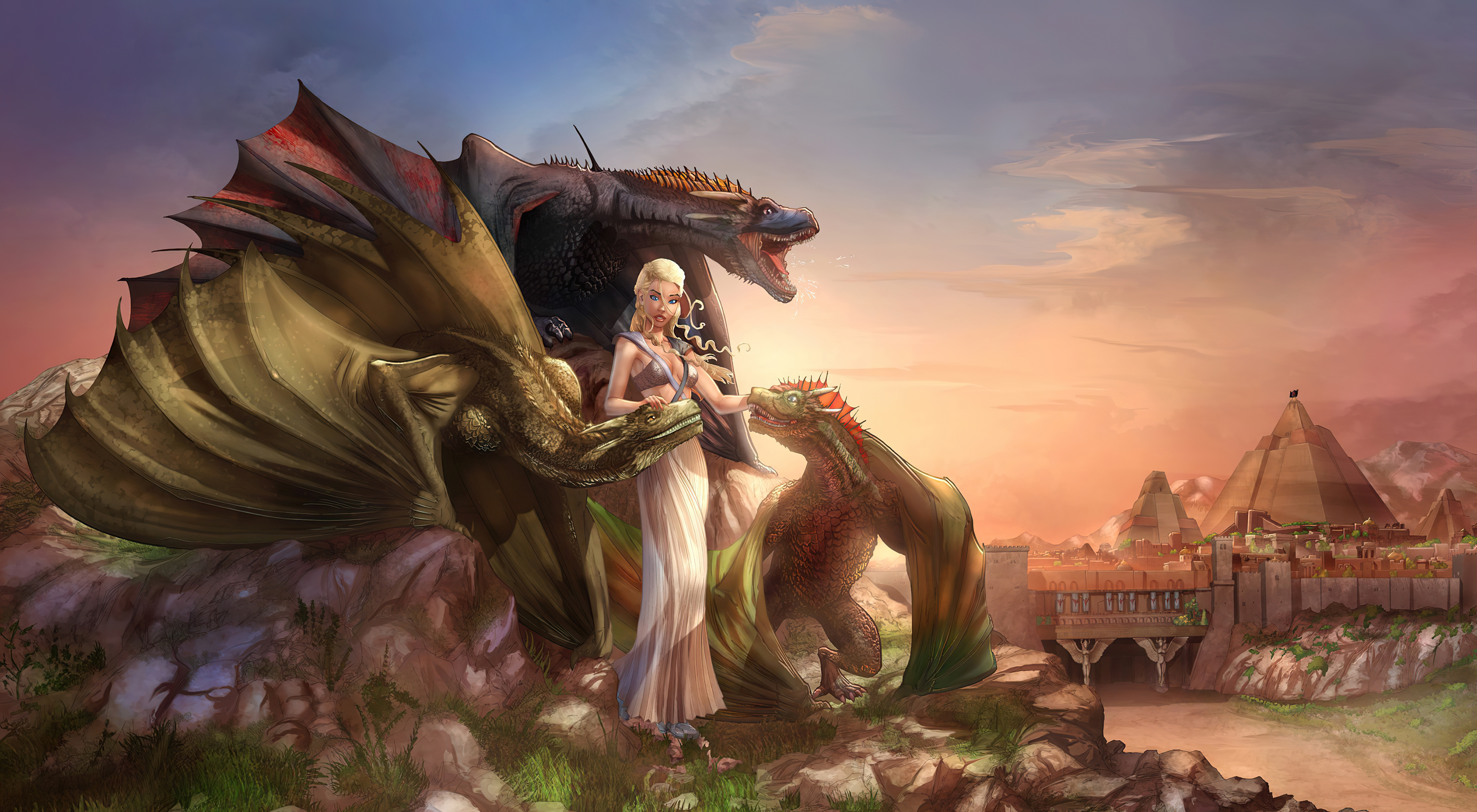Unveiling Daenerys' Dragons: Power, Lineage & Legacy | Game Of Thrones
Have you ever wondered what gives a fictional character their power, their mystique, their ability to captivate audiences across the globe? The dragons of Daenerys Targaryen, in the world of Game of Thrones, are a prime example, and their story is a testament to the enduring power of myth and narrative.
These magnificent creatures, born of fire and magic, are far more than just fantastical beasts. They are embodiments of power, legacy, and the relentless pursuit of destiny. Their presence in the narrative is a constant reminder of Daenerys' ambition and her claim to the Iron Throne. The dragons are not just pets or weapons; they are extensions of her will, her heritage, and her unbreakable spirit. They are the embodiment of a legacy that was once thought lost to time, a lineage that harkens back to the glory days of the Targaryen dynasty, and a future that could reshape the very fabric of Westeros.
Lets examine the very essence of these extraordinary beings. Dragon lore permeates nearly every culture, from ancient China to medieval Europe, and beyond. Each culture has its own interpretation of the dragon, shaping its form, its abilities, and its role within their narratives. Dragons have become powerful symbols, representing everything from chaos and destruction to wisdom and prosperity. These creatures are shapeshifters in storytelling, evolving across different mythologies and tales, adapting to the narratives of different cultures and changing over time. This shape-shifting highlights the adaptable essence of these mythical creatures and their lasting appeal, making them even more interesting to study.
In the context of Daenerys Targaryen, understanding the significance of her dragons requires a deeper look into their individual identities and the roles they play in shaping the narrative of Westeros. From their hatching to their key roles in pivotal events, their individual characteristics, represented by their names, reflect aspects of their destinies and their influence on the world around them. These fiery symbols are not mere instruments of war; they are integral to Daenerys' story of empowerment and her claim to a realm.
The genesis of Daenerys' dragons is as dramatic and mystical as their existence. The dragon eggs, gifted to Daenerys by Illyrio Mopatis, were believed to be petrified remnants of a forgotten era. They came to life, imbued with fire and magic. Their rebirth signifies not just the revival of a mythical species, but also the resurgence of the Targaryen lineage, heralding a new era of power and ambition.
The actual hatching of the dragons is an unforgettable event. In a dramatic ceremony, Daenerys, with unwavering resolve, places the dragon eggs in the flames of her husband, Khal Drogo's, funeral pyre. From this act of self-sacrifice and defiance, life springs forth, with the birth of Drogon, Rhaegal, and Viserion, the first dragons to walk the world in centuries, symbolizing Daeneryss rebirth, her transformation into the Mother of Dragons and a harbinger of change.
The power of a dragon lies not only in its fiery breath or its imposing presence, but also in the narratives they inspire. Dragons, as symbols, have the ability to ignite our imaginations and tap into deep-seated archetypes. They often embody the hero's journey, a narrative that has resonated across cultures and time. The hero's journey, a foundational narrative pattern, involves a departure, challenges, and a triumphant return. Daenerys' journey, mirrored by the growth and evolution of her dragons, is a classic example of this pattern.
Consider the role the dragons play. Drogon, Rhaegal, and Viserion are not simply destructive forces; they are catalysts for Daenerys' transformation. Each dragon, with its own distinct personality, influences Daenerys' decisions and actions. Their presence shapes the political landscape and is the force that allows Daenerys to challenge established power structures and to fight for her right to rule. They help her overcome her doubts and her enemies, embodying the courage she finds within herself. Their story, therefore, becomes intertwined with her own, reinforcing the powerful impact of the dragons on the overall narrative.
The individual names of Daenerys dragons Drogon, Rhaegal, and Viserion are also deeply symbolic, each reflecting a crucial aspect of Daenerys' character and ambitions. Drogon, named after Khal Drogo, embodies her love and respect for her late husband and his Dothraki culture. Rhaegal, named after Daenerys's brother, Rhaegar Targaryen, symbolizes the legacy she is striving to reclaim. Viserion, named after her other brother, Viserys Targaryen, represents the Targaryen lineage and the burden of expectation. The names are not just labels; they are echoes of the past, woven into the very fabric of the future. Each name carries a weight of history, adding depth and layers to the dragons' identities and significance.
Drogon, the largest and most ferocious of the three, is Daeneryss primary mount and a symbol of her raw power and connection to her dragons. He reflects her own untamed spirit. Rhaegal, with his golden eyes and green scales, embodies a more regal aspect. Viserion, with his cream and gold scales, represents the legacy and history of the Targaryen dynasty.
The dragons influence extends far beyond Westeros, touching the entire world of Game of Thrones. They become symbols of hope and fear, power and destruction. They help Daenerys challenge the established order, fighting against injustice and tyranny. However, as the dragons grow, so too does their capacity for destruction, causing Daenerys to grapple with the moral implications of her power. The dragons become a source of both hope and dread. Their fire can heal, and destroy. Their power tests Daenerys' leadership and forces her to make difficult choices that shape her destiny. The fate of Westeros hinges on the actions of the dragons. As they grow, so too does the scope of their influence.
The impact of the dragons on the Game of Thrones universe cannot be overstated. They are the driving force behind the most significant events. From the early days of her exile, when the dragons are just hatched, to the final confrontation for the Iron Throne, the dragons are central. Their presence causes tension, and shifts the balance of power, causing both conflict and alliance. The dragons are a symbol of Daenerys ambition, as well as a catalyst for change.
Exploring the imagery associated with the dragons enhances our understanding of their symbolic roles. Their scales, their wings, and their fiery breath have all been etched into the collective imagination, representing power, danger, and mystery. The dragons soar through the skies of Westeros, their presence casting a shadow over the narrative. The way they are presented visually, their appearance on screen, their interactions with Daenerys, and with other characters, all add layers to the narrative, enriching the storytelling and capturing the viewers imaginations.
The use of dragons in Game of Thrones is a powerful example of the enduring appeal of mythology. Through their presence, the series explores themes of power, lineage, destiny, and the human condition. The dragons serve as a constant reminder of the forces at play, and as a symbol of the potential for both creation and destruction. The dragons show that the best stories, as well as the most lasting ones, are built on the foundation of potent archetypes, compelling characters, and the complex dance of good and evil.
In the realm of Westeros, dragons stand as symbols of immense power and authority. The dragons of Daenerys Targaryen are not just fantastical creatures; they are living embodiments of her heritage, her ambitions, and her ability to challenge the existing order. They represent the resurgence of a forgotten power and the potential to reshape the destiny of nations.
The origins and evolution of dragon lore provide an illuminating journey through human history and culture, demonstrating the enduring power of these mythical beings. From ancient myths to modern fantasy, dragons have captured our imaginations and continue to inspire awe and wonder.
The dragons' story is not just about the dragons; it is a story about power, lineage, and the never-ending struggle for the Iron Throne. The dragons challenge viewers to contemplate the nature of power and the consequences of its use.
The story of Daenerys Targaryen and her dragons reminds us of the power of narrative, and the ability of symbols to shape our understanding of the world. Their story inspires us to consider the legacies we create, the ambitions we pursue, and the choices we make in the face of adversity.
| Aspect | Details |
|---|---|
| Mythical Significance | Dragons are symbols of immense power and authority, representing lineage, ambition, and the ability to challenge the established order. |
| Cultural Impact | Dragons have appeared in numerous fantasy stories, fairytales, and mythologies worldwide, evolving in form and symbolism across cultures. |
| Daenerys' Dragons | Hatched from ancient dragon eggs gifted by Illyrio Mopatis, these creatures symbolize Daenerys' power and claim to the Iron Throne. |
| Symbolism of Names | Drogon (after Khal Drogo), Rhaegal (after Rhaegar Targaryen), and Viserion (after Viserys Targaryen) represent aspects of Daenerys' life, legacy, and ambitions. |
| Narrative Role | Dragons are integral to the hero's journey, influencing key events, shaping the political landscape, and challenging the established order. |
| Visual Representation | Their scales, wings, and fiery breath represent power and mystery, enhancing the storytelling through their visual impact. |
| Impact on the Series | They drive major events, symbolizing hope, fear, and the constant struggle for the Iron Throne. |
For further exploration, you can consult resources like the Game of Thrones Wiki.

Discover The Mystical World Of Daenerys Targaryen's Dragons

Discover The Mystical World Of Daenerys Targaryen's Dragons

Daenerys Targaryen With Dragons 4k Wallpaper,HD Tv Shows Wallpapers,4k